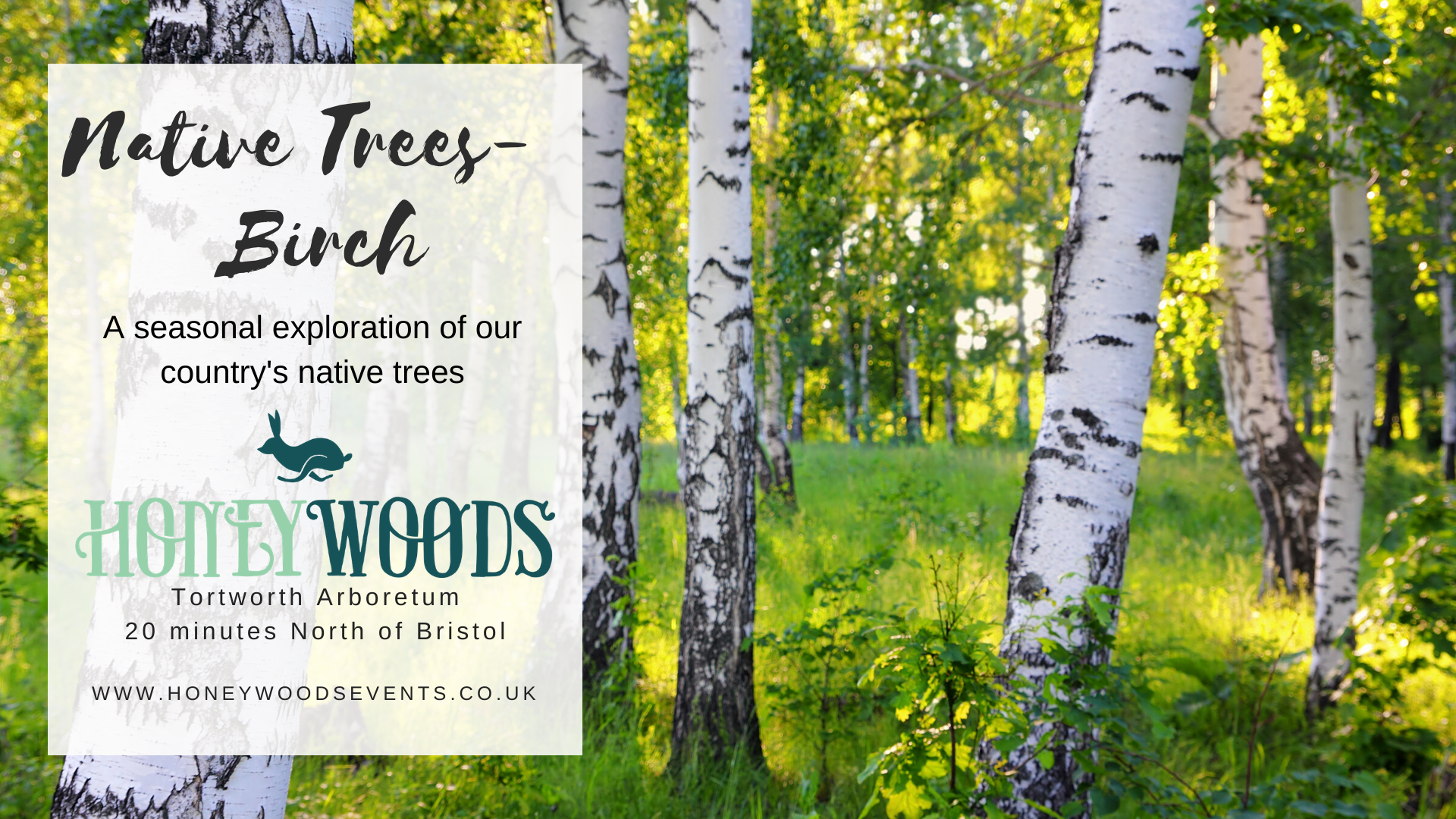The birch tree. The first tree on our course is, appropriately, a pioneer species.
Birch trees have an incredible ability to reclaim spaces and return them to woodland. They grow on poor soil and turn it into a rich woodland ecosystem. The rest of our native trees follow. It makes sense to begin with the birch.
They are medicinal, magical, and beautiful. They are intertwined with our human cultures, and the study of human existence cannot be complete without the birch tree and it’s folklore.
Birch gives us medicine, warmth, building materials. We use it to weave containers for gathering food, and to build shelter. It is in our homes; if you have ever been to IKEA you have probably brought birch into your life. It is a fire giving tree, burning hot and full of essential oils.
We start the course with birch so that we can learn about the biology of a tree. In March the sap begins to rise, and we will use this as a way in to understanding the systems of life within the tree. The xylem and phloem, photosynthesis, how leaves grow.
We will tap the tree to taste the energy giving sap, a practice that is as old as human existence.
We will discover how trees connect to the networks of fungi on the forest floor, sharing resources, and taste the medicine of the birch polypore mushroom.
We are lucky to have access to a number of mature birch trees at Tortworth Arboretum, including some exotic varieties. We will focus on the two native species and the day will involve a short walk to a secluded part of the arboretum.
You will leave the day with a sound understanding of the birch tree and its place within the woodland ecosystem. You will begin to understand the complexity and intricacies of how trees work. You will gain the knowledge you need to harvest trees and not harm the woodland. But most of all, you will leave with a sense of awe and wonder at this most inspiring and majestic species.


